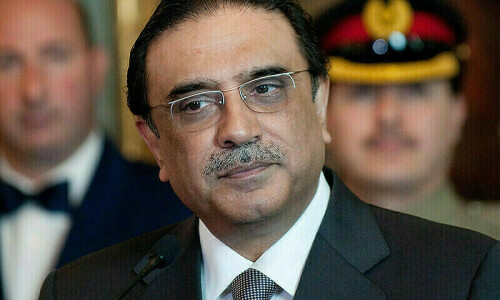In August 2021, annual inflation in the US was 5.3 per cent. It rose gradually to hit a 40-year high of 9.1pc in June 2022 before slipping to 8.5pc in July. Similarly, the inflation rate in the UK began rising from 3.1pc in September last year and also hit a 40-year high of 10.1pc in July this year.
These two examples show how fast inflation has been rising for some time bringing under question the ability of monetary authorities to manage it. In Pakistan, annualised inflation rate took off from 8.4pc in August 2021 and reached a terrifying height of 24.9pc in July 2022. This happened despite the fact that the State Bank of Pakistan (SBP) increased its policy rate cumulatively by 800 basis points to 15pc in less than a year — between 21st September 2021 and 13th July 2022.
In its latest monetary policy meeting on 22nd August the central bank, however, decided to hold the interest rate at this level. The central bank believes that a gradual easing in inflation can be expected from October onwards.
Regardless of whether inflation has already peaked or would peak in August or September, its easing from October is only expected — not at all guaranteed. “This baseline outlook remains subject to uncertainty, with risks arising from the path of global commodity prices, the domestic fiscal policy stance, and the exchange rate,” according to the SBP. Add to it the risks arising out of growing political instability and floods in Sindh and Balochistan that will affect fiscal operations and you get a better idea of how inflation will likely move from October onwards.
While there is some expectation in official quarters that the rise in prices will ease in the coming months, the calculations are optimistic and contingent on factors beyond the government’s immediate control
During FY22 ended in June, Pakistan witnessed a whopping fiscal deficit of Rs5.26 trillion or 7.9pc of the recently rebased GDP against the initial target of Rs3.4tr or 5.1pc of the rebased GDP. The government missed the deficit target both due to the mobilisation of lesser-than-targeted net revenue and higher-than-targeted current expenses. Now, it is naïve to expect that in a year of floods and political instability the government will keep the FY23 deficit within the targeted limit of 4.9pc of GDP.
Revenue collections could be affected noticeably following the floods in Sindh and Balochistan that caused heavy losses to agriculture, livestock, wholesale and retail trade besides damaging houses, roads, railways and other infrastructure.
On the other hand, the federal and provincial governments will need lots of money for carrying out the rescue and rehabilitation work in the two provinces. The money to be spent under this head would obviously be in excess of the budgeted expenditures and would, thus, lead to expansion in the overall federal budget deficit. This means the government demand for bank borrowing would remain strong, crowding out the private sector. That is one thing the central bank will take into account in resetting its monetary policy in October.
It is naïve to expect that in a year of floods and political instability the government will keep the FY23 deficit within the targeted limit of 4.9pc of GDP
Floods in Sindh and Balochistan and the consequent damages caused to agriculture and livestock sectors are sure to push food inflation up and keep them high if not throughout this fiscal year — at least till December. Further pressure on food prices may come in the form of costlier food imports in case of higher food commodity prices or the rupee depreciation. This is another thing the SBP will watch carefully before revisiting its monetary policy.
Moving forward, the health of the external sector should improve with the expected inflow of about $1.2 billion from the International Monetary Fund (IMF) after the approval of the IMF Board on August 29. That, together with some conditions still applied on imports of luxury items and linking of the opening of imports of letters of credit of fuel oil with the prior approval of the SBP, may help keep the current account deficit in check.
And, forex liquidity thus improved in the interbank market may enable the central bank to avoid any speculative attack on the rupee and the local currency may either make some modest gains or at least avoid a massive fall.
If things go well and reality meets the above anticipation, then that should help contain imported inflation and contribute a bit to the easing of headline inflation providing the central bank room for keeping its key policy rate intact.
The current account deficit fell to $1.21bn in July this year from $2.187bn in June, but it remained higher than the deficit of $851 million in July last year according to the balance of payments statement released recently. However, the contraction of the current account deficit in July compared with June is entirely due to the decline in imports and not at all because of growth in exports. (In fact, export earnings decline marginally).
This is a disturbing element. Restrictions on luxury imports are already being lifted gradually and the central bank has told domestic oil companies that the condition of prior approval for the opening of LCs is temporary. Depending upon how soon restrictions on imports of luxury items are removed and oil import LCs are allowed to be opened without prior approval of the central bank, import-led demand for foreign exchange is bound to grow in the coming months.
On the other hand, there is little hope that exports would grow fast enough to make a significant impact on the current account primarily due to structural weaknesses and the high cost of energy and capital. So, the current account deficit can be expected to rise on a year-on-year basis in the near future, more so because we are also witnessing a declining trend in home remittances.
Published in Dawn, The Business and Finance Weekly, August 29th, 2022












































